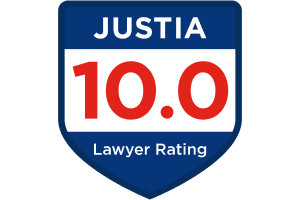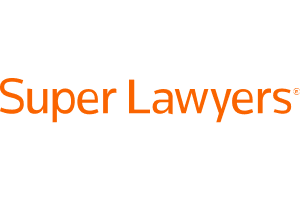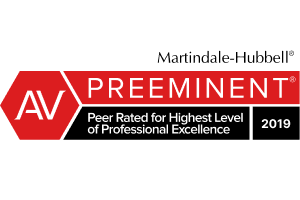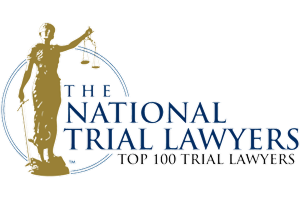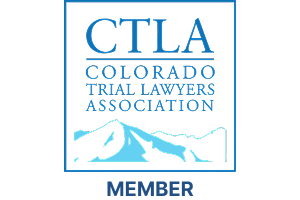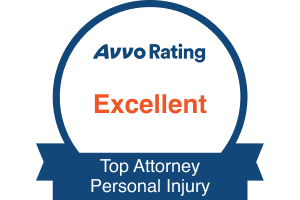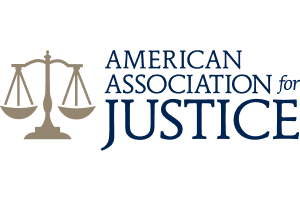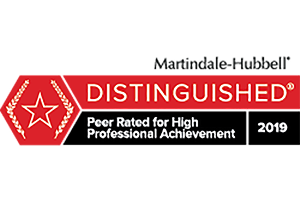What to Do After a Truck Accident
Getting hit by a commercial truck can turn an ordinary day into chaos. The injuries are often serious, the vehicles are heavy, and the legal issues are more complicated than a typical car crash. At Cook Bradford & Levy, we help people and families across Colorado navigate this exact moment. The firm is led by trial lawyers Jason Levy and Brian Bradford, and the team’s work focuses on helping the injured rebuild. This page walks you through smart steps to take after a crash, explains the unique issues in truck cases, and shows how the law can protect you when the trucking company and its insurer try to push back. If you have any questions, please reach out to us for a free consultation at 303-543-1000.
First Priorities at the Scene and in the First 48 Hours
Secure safety and call 911
After a devastating truck crash, your first job is to protect life and health. We recommend that if you can move to a safe area, do so. Call 911 and request police and emergency medical services. A police response creates an official record that will help later. Truck crashes often involve several vehicles, multiple drivers, and complex diagrams. An official report captures names, plate numbers, insurance information, and initial observations that can anchor the case later.
Accept medical evaluation even if you feel “okay”
We all know that adrenaline can mask pain. Let EMS check you at the scene and get a medical exam as soon as possible. For example, spinal disc injuries, internal bleeding, and traumatic brain injuries can be subtle at first and then worsen quickly. Your medical records will become the backbone of any claim. Getting prompt and consistent care, clear symptom reporting, and follow-through with specialists are important for both your health and your case.
Gather information if it is safe to do so
If you are able, take photos and short videos that show final resting positions, skid marks, debris fields, vehicle damage, visible injuries, road conditions, lighting, and traffic control devices. Photograph the truck’s cab door to capture the USDOT number and the company name. Note the trailer number, which can identify the carrier and trip. Get the names and phone numbers of witnesses. Trucking companies move quickly after a crash. Your early documentation can be priceless later on down the road in your case.
Do not argue fault at the scene
Rather, cooperate with officers and exchange information, but avoid debating fault with the truck driver or anyone else. A seasoned truck accident lawyer like those at Cook, Bradford & Levy know that anything you say can be taken out of context later. We recommend that you answer the officer’s questions factually and briefly.
Notify your insurance but avoid recorded statements to the other side
Call your own auto insurer to open a claim and to access med-pay if you have it. Decline any recorded statement to the trucking company’s insurer until you have counsel. Truck adjusters are trained to lock in statements that minimize their exposure. A careful, accurate statement given with legal guidance will serve you better.
Why Truck Cases are Different from Car Cases
Commercial trucking is governed by a detailed safety code. The Federal Motor Carrier Safety Regulations set standards for a number of things like driver qualifications, drug and alcohol testing, hours of service, vehicle inspections and maintenance, cargo securement, and more. When those rules are broken and someone is hurt, the violations can support a finding of negligence.
Trucking cases also involve complex evidence sources. Many modern tractors and trailers carry electronic control modules, engine control units, dash cameras, and fleet telematics. These systems can record speed, throttle, brake, GPS position, hard braking events, and hours-of-service data. The truck may have forward collision warnings or lane departure systems that generate reports. A well built case captures and preserves this data before it can be overwritten.
Vicarious liability and corporate negligence claims commonly travel together in these cases. Employers are responsible for the negligence of their drivers acting within the course and scope of employment.
Spoliation – or the destruction – of evidence is another frequent battleground. Courts have broad authority to sanction parties who fail to preserve relevant evidence once litigation is reasonably anticipated. In a trucking context, quick preservation letters and early court intervention can prevent the loss of log data, electronic recordings, and maintenance materials.
Finally, comparative fault is often argued by an at-fault truck company. In Colorado, comparative fault means that a victim can be found to be partially at-fault and still recover damages that are reduced by the percentage of fault. The only thing to be careful of is if a victim is 50% or more at fault, in which case no recovery is allowed in Colorado. Therefore, careful reconstruction and expert work help ensure fault is placed where it belongs.
A Practical Checklist After a Truck Crash
In the first week
Get follow-up medical care. Save every bill, receipt, and mileage log. Keep a simple journal that tracks pain levels, sleep disruption, missed work, and daily limitations. Secure your vehicle and ask your insurer not to dispose of it. If your vehicle may be a key piece of evidence, your lawyer can take steps to preserve it for inspection.
Contact counsel as early as possible. An experienced trucking lawyer can send preservation notices to the motor carrier and its insurer, demanding that they retain driver qualification files, drug and alcohol test results, pre and post trip inspection sheets, dispatch records, Qualcomm or other telematics, engine control module data, dash camera footage, bills of lading, weight tickets, forklift logs, and maintenance files. Early contact can prevent data loss and change the outcome of the case.
Document damages the right way
Economic losses include medical expenses, future care costs, wage loss, and diminished earning capacity. Non-economic losses include pain, mental suffering, inconvenience, and loss of quality of life. In a wrongful death case, eligible family members may claim damages for financial losses and for grief or loss of companionship as allowed by statute. Keep all documentation and forward it to your legal team.
Mind social media and privacy
Assume the defense will look. Adjust your privacy settings and avoid posting about the crash, your injuries, or activities. Even innocent photos can be misinterpreted.
How Liability is Proven in Truck Cases
The building blocks of negligence
Every negligence case requires proof of duty, breach, causation, and damages. Trucking companies and drivers owe a duty to operate with reasonable care and to follow the safety rules that apply to their industry. Breach can be shown by conduct that falls below that standard. Causation links the breach to the harm, and damages quantify the losses.
Safety rules that matter
Hours of Service rules within the FMCSRs limit consecutive driving and require off-duty time. This is because it is well-known that chronic fatigue contributes to crashes, and records can show violations. Part 396 of the FMCSRs requires systematic inspection, repair, and maintenance. Brake and tire issues feature in many collisions. Part 391 governs driver qualification, including medical certification and driving history checks. Part 382 mandates drug and alcohol testing in pre-employment, random, and post-accident contexts. When a case shows that a carrier ignored these rules, and others, juries often view the conduct as unreasonably dangerous.
Electronic evidence and scene work
Modern case work includes downloading the engine control module and pulling telematics. Experts can overlay speed and location data on high resolution aerial maps to reconstruct the crash. Scene inspections capture road grade, sightlines, and signage. Video from nearby businesses, traffic cameras, and doorbell systems can fill gaps. Prompt subpoenas and canvassing increase the odds of recovering helpful footage.
Corporate negligence and punitive exposure
Direct corporate negligence claims focus on the carrier’s choices and systems. Did the company hire a driver with a history of violations, skip meaningful road tests, or ignore out-of-service orders. In appropriate cases, punitive damages may be available to punish and deter reckless conduct. Courts differ on the showing required, but the theme is similar. Punitive exposure often turns on proof of repeated violations, falsified logs, ignored maintenance defects, or pressure from dispatch that encourages unsafe driving.
Common Defenses and How to Overcome Them
Comparative fault and sudden emergency
Defendants may claim you were speeding, following too closely, or that a sudden emergency left the truck driver no time to react. Careful reconstruction, your own dash-cam, consistent testimony, and expert analysis of vehicle data can rebut these defenses. Weather and lighting facts, stopping distances, and perception-reaction times are often part of the conversation, and our team will work hard to gather evidence that will support your claim.
Minimal impact arguments
Even though it may not seem like it, damaged underride bar or a trailer strike can produce serious injuries without dramatic crush damage to the passenger compartment. Medical and/or biomechanical experts can explain how forces transfer through the body and why symptoms sometimes escalate over days and weeks.
Preexisting conditions
Insurers frequently argue that pain stems from old injuries or degenerative changes. The law allows recovery when a crash aggravates a preexisting condition. Treating physicians and specialists can explain the before and after picture and connect new symptoms to the trauma. Cook Bradford & Levy lawyers are well-versed in representing clients with pre-existing conditions, and in fact, view it in many cases as a helpful circumstance.
Gaps in treatment
As working parents ourselves, we understand that life is messy. Childcare, job demands, transportation challenges, and provider availability can create gaps. Meticulous documentation of the reasons for any delay, along with steady follow-through once care resumes, reduces the impact of this defense.
The Claims Process and the litigation timeline
Investigating and valuing the claim
Early investigation sets the table. Your lawyer will obtain the police report, 911 audio, photos, and body-worn camera footage when available. Preservation letters go to the motor carrier and to any outside maintenance vendors or brokers. Once you reach a point of maximum medical improvement or a stable long-term treatment plan, your team can present a comprehensive settlement package. That demand typically includes a liability analysis, a medical summary, future care estimates, wage loss documentation, and a discussion of pain and life impact.
Filing suit and discovery
If the carrier’s offer does not reflect the harm done, litigation begins. After filing and serving the complaint, the parties exchange disclosures and written discovery. Depositions follow. Expert discovery includes accident reconstruction, trucking safety, human factors, and medical opinions. Along the way, motions may address discovery disputes, spoliation concerns, or evidentiary issues. Celotex and related cases define how summary judgment motions are evaluated and why admissible evidence matters.
Mediation and trial
Most cases resolve short of trial when the defense sees that your team is prepared and the evidence is clear. Mediation provides a structured negotiation led by a neutral. If the defense will not pay full value, a jury can decide fault and damages. Truck cases are trial-ready cases because jurors understand the danger an 80,000-pound rig can pose when rules are ignored.
Damages in Truck Accident Cases
Economic losses
These include past medical bills, future treatment and rehabilitation, prescriptions, assistive devices, home modifications, and lost wages. For people who cannot return to their prior line of work, an economist and a vocational expert may quantify diminished earning capacity over the remaining work life.
Non-economic losses
These cover pain, mental suffering, inconvenience, loss of enjoyment of life, and impairment of the ability to perform activities that make life meaningful. Jurors are asked to consider how symptoms disrupt sleep, family life, recreation, and social relationships, and to assess what that loss is worth in money.
Physical impairment and disfigurement
Permanent limitations and scarring deserve separate consideration. Scars, limps, range-of-motion losses, and chronic pain change how people move through the world. Expert testimony can help jurors understand the human cost.
Punitive damages in appropriate cases
Where a trucking company or driver recklessly disregards safety, punitive damages may be available to punish and deter. Repeated hours-of-service violations, falsified logs, dispatch pressure that encourages speeding, or known mechanical defects can support a punitive claim. These are fact-intensive issues that benefit from thorough discovery.
How Cook Bradford & Levy Builds Truck Cases
Rapid response and preservation
The defense often deploys investigators within hours of a crash. Your legal team should answer with a rapid response that secures vehicles, photographs the scene, and serves preservation demands that reach the carrier, the trailer owner, any broker, any shipper with relevant loading records, and all third party vendors who touched the equipment. The goal is to freeze key data before it disappears.
Expert-driven investigation
Trucking cases commonly require a coordinated expert group. Accident reconstructionists, trucking safety experts, human factors professionals, biomechanical consultants, and medical specialists each play a role. The firm’s job is to assemble the right team for the facts, focus them on the major issues, and translate technical language into clear, persuasive stories.
Client-centered advocacy
There is no such thing as a one size fits all case. A college student with a concussion needs different resources than a lineman with a torn shoulder or a parent facing a long spinal fusion recovery. A thoughtful legal team helps set up appropriate care and keeps the focus on long term health and stability while the case is built.
Frequently Asked Questions
What if the truck driver was cited
A traffic citation is a data point, not the final word. Pleas to reduced charges and dismissals happen for many reasons that do not reflect civil liability. Your case depends on civil standards and the totality of the evidence.
What if I may have been partly at fault
Comparative negligence rules reduce recovery by your percentage of fault. That is why careful reconstruction matters. Even when a driver makes a mistake, a fatigued, speeding, or poorly maintained tractor-trailer may bear the lion’s share of responsibility.
What if the crash involved a broker or shipper
Depending on the jurisdiction and the facts, brokers and shippers can face liability where they control or negligently influence safety. Courts take various approaches. Evidence about selection practices, safety ratings, and the level of control can be decisive. Your legal team will evaluate these angles early.
How long do I have to file
Deadlines are strict and vary by claim type and defendant. Some claims involve governmental entities with much shorter notice requirements. We recommend that you speak with either Brian or Jasonl promptly so your rights are protected.
A Steady Path Forward with CBL
A truck crash puts your health, your finances, and your sense of safety under strain. You do not have to push through it alone. The most important things you can do are to get the medical care you need, preserve evidence, and put an experienced trucking team to work early. When you do, you shift the weight off your shoulders and onto professionals who know how to hold rule breakers accountable.
Cook Bradford & Levy stands ready to help. Jason Levy and Brian Bradford lead a firm that focuses on people, not files. If you or a loved one was hurt in a crash with a commercial truck, reach out and start a conversation with a team that understands the road ahead and knows how to navigate it. Call us today at 303-543-1000.


